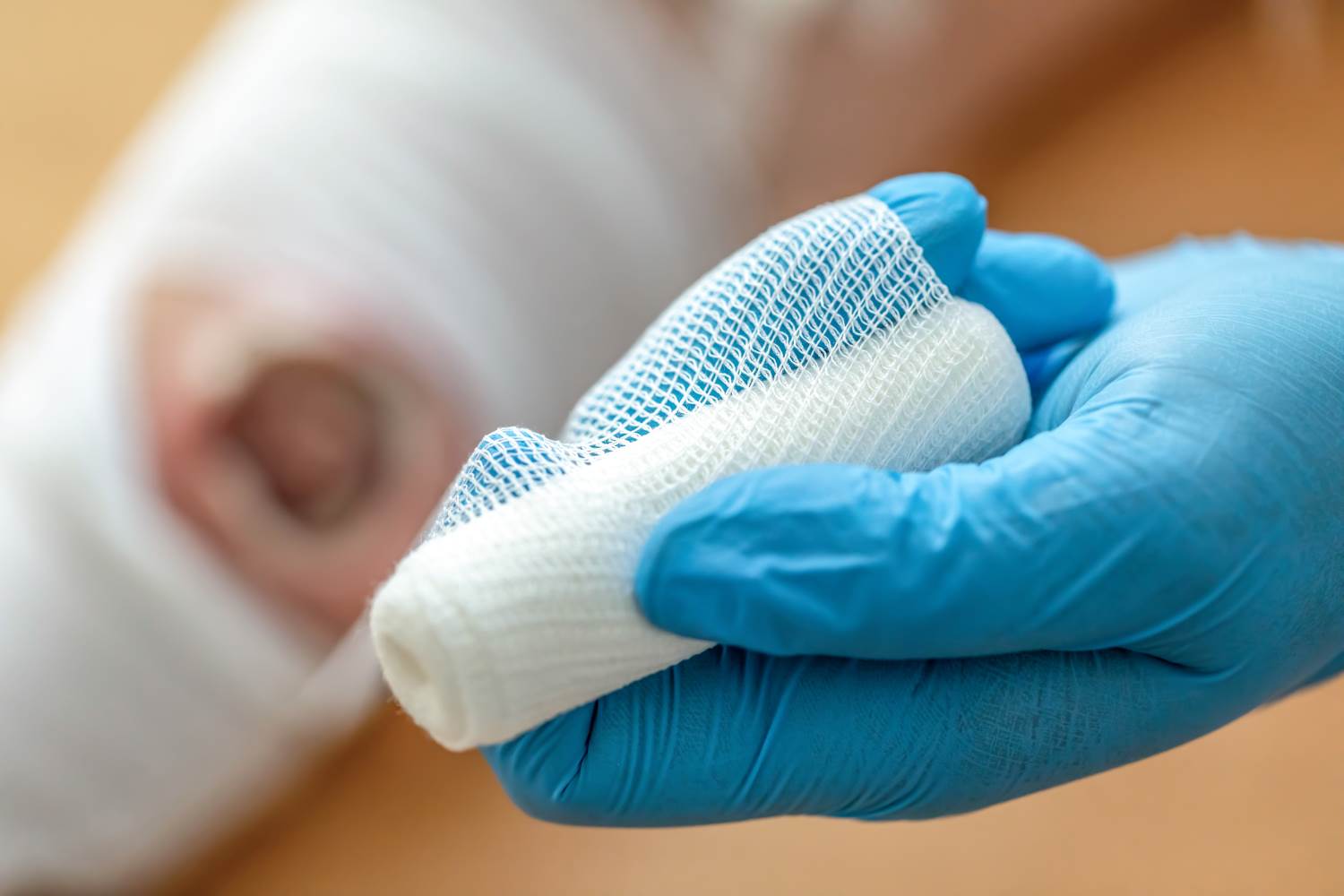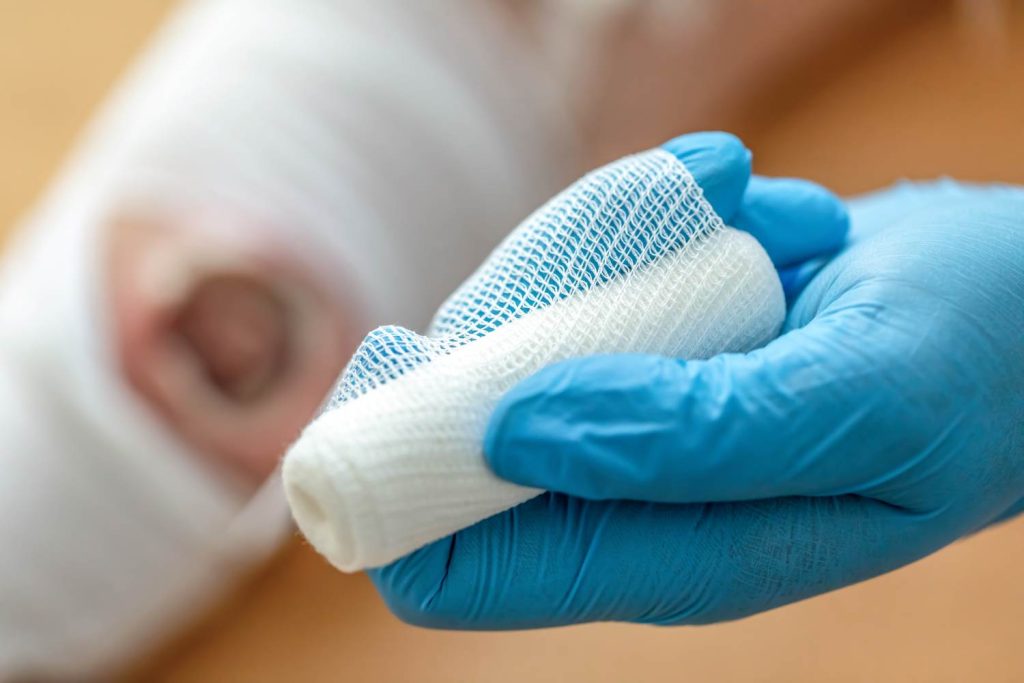- Free Consultation: (630) 527-4177 Tap Here to Call Us
What Is an Unstageable Pressure Sore?

Pressure sores—also known as bedsores or pressure ulcers—are localized injuries to the skin and underlying tissue, typically occurring over bony prominences due to prolonged pressure, friction, or shear. Among the four recognized stages of pressure ulcers, one type stands out due to its severity and complexity: the unstageable pressure sore.
Unstageable pressure sores are serious wounds that often signify severe tissue damage and are frequently associated with long-term immobility, nursing home neglect, or inadequate medical care. Understanding what an unstageable pressure sore is, how it develops, and what it may indicate is critical—especially in settings like hospitals, nursing homes, or home health care environments.
Defining an Unstageable Pressure Sore
The National Pressure Injury Advisory Panel (NPIAP), which sets the standards for classifying pressure ulcers in the U.S., defines an unstageable pressure injury as:
“Full-thickness skin and tissue loss in which the extent of tissue damage within the ulcer cannot be confirmed because it is obscured by slough or eschar.”
In other words, the wound is so covered by dead tissue (either yellow slough or black eschar) that healthcare providers cannot determine how deep the damage goes. The true stage of the wound remains hidden until the slough or eschar is removed (a process called debridement).
Unstageable sores are always at least a Stage 3 or Stage 4 wound because full-thickness tissue loss is present—only the visibility is obscured.
Key Characteristics of an Unstageable Pressure Ulcer
- Location: Typically found on the sacrum, heels, hips, back, or elbows.
- Color and texture: Covered in slough (yellow, tan, green) or eschar (black or brown, leathery).
- Depth: Cannot be measured due to the covering necrotic tissue.
- Pain: Often painful, though patients with significant nerve damage or cognitive impairment may not report it.
- Risk of infection: High, especially if the wound becomes open or moist underneath the eschar.
Causes and Risk Factors of Unstageable Pressure Sores
Unstageable pressure sores develop through the same process as other pressure ulcers: unrelieved pressure over time that impairs blood flow to the skin and underlying tissue. However, these sores progress to a more advanced stage when care is delayed or inadequate.
Common risk factors include:
- Immobility (e.g., spinal cord injury, coma, or long-term bed rest)
- Advanced age
- Malnutrition
- Incontinence
- Diabetes
- Poor circulation
- Lack of routine repositioning
- Neglect in long-term care settings
Prevalence of Pressure Ulcers
Pressure sores—especially unstageable ones—are more common than many people realize and are often associated with poor outcomes.
- According to the Agency for Healthcare Research and Quality, more than 2.5 million people in the U.S. develop pressure ulcers each year.
- A 2019 study published in Advances in Skin & Wound Care found that unstageable pressure injuries accounted for 10.8% of all hospital-acquired pressure injuries.
- In nursing homes, CMS data shows that approximately 11% of high-risk residents develop pressure ulcers, and a subset of these may become unstageable if not properly treated.
- Mortality rates are high for patients with severe pressure ulcers. One study reported a one-year mortality rate of 64% for patients with Stage 4 or unstageable pressure ulcers.
These statistics underscore the seriousness of these wounds—not just as a medical issue but also as a potential sign of systemic neglect.
Diagnosis and Evaluation of Pressure Sores
Diagnosing an unstageable pressure sore requires:
- Physical exam by a trained wound care provider or physician.
- Documentation of wound location, size, drainage, odor, and surrounding skin condition.
- Photographic evidence, which is often used in long-term care or hospital settings.
- Debridement, which may be surgical, enzymatic, or autolytic, is often necessary to remove slough or eschar and reveal the true depth and stage.
In some cases, wound cultures, bone scans, or an MRI may be ordered if there is concern for underlying infection or osteomyelitis.
Treatment Options for Unstageable Pressure Ulcers
Treatment for an unstageable pressure ulcer must be carefully managed and individualized, especially if the patient is medically fragile.
1. Debridement
The first step is typically removal of necrotic tissue to expose the wound bed:
- Surgical debridement: Often necessary for extensive eschar.
- Autolytic debridement: Using moisture-retentive dressings to allow the body’s enzymes to break down dead tissue.
- Enzymatic debridement: Applying topical agents like collagenase (Santyl).
In some cases—especially if the eschar is dry, intact, and located on the heel—removal may be delayed or avoided to prevent infection.
2. Infection Control
Because necrotic tissue harbors bacteria, unstageable wounds are highly susceptible to infection, including cellulitis, sepsis, or bone infection.
Treatment may involve:
- Topical antimicrobials
- Systemic antibiotics if signs of infection are present
- Frequent dressing changes
3. Pressure Relief

Offloading pressure is critical. This may include:
- Repositioning every two hours or more frequently
- Special pressure-relieving mattresses, heel boots, or cushions
- Use of lifts to avoid dragging the patient
4. Wound Dressings
Dressings are chosen based on moisture level and debridement needs. Options include:
- Hydrocolloids
- Alginates
- Foams
- Hydrogel dressings
5. Nutritional Support
Malnutrition impairs wound healing. Patients may need:
- High-protein diets
- Vitamin C and zinc supplements
- Dietitian consultations
Complications of Unstageable Pressure Sores
If not treated properly, unstageable pressure sores can lead to:
- Sepsis
- Osteomyelitis (bone infection)
- Fistulas
- Amputation
- Death, particularly in older or immune-compromised patients
In institutional settings, like nursing homes and hospitals, these sores may also indicate neglect or inadequate care, potentially triggering regulatory action or civil liability.
Legal Implications of Unstageable Pressure Sores
In hospitals or nursing homes, the development of an unstageable pressure sore often raises red flags. These wounds are considered “never events” by the Centers for Medicare & Medicaid Services (CMS)—meaning they should not occur if proper care is provided.
As such, their presence may be evidence of:
- Negligence in repositioning or turning the patient
- Failure to perform skin assessments
- Inadequate documentation or response to early signs of skin breakdown
- Improper nutrition or hydration
Patients or their families may have grounds for a medical malpractice or nursing home neglect claim if the wound was preventable or made worse by substandard care.
Preventing Unstageable Pressure Sores
Preventing pressure ulcers requires a multi-disciplinary, proactive approach:
- Routine skin checks
- Repositioning protocols
- Moisture management (e.g., incontinence care)
- Use of pressure-reducing surfaces
- Adequate staffing in long-term care facilities
- Patient and caregiver education
According to the Agency for Healthcare Research and Quality, implementation of evidence-based prevention programs can reduce pressure ulcer incidence by 50% or more.
What to Do If You or a Loved One Has an Unstageable Pressure Sore
If you or someone you love has developed an unstageable pressure sore—especially in a hospital or nursing home—it’s important to take the situation seriously.
Here’s what to do:
- Request a wound care consult immediately.
- Ask for documentation of when the sore was first noticed and how it has been treated.
- Take photographs if permitted.
- Involve family or patient advocates in care decisions.
- Contact an experienced Illinois nursing home injury lawyer if there is evidence of neglect, delay in care, or harm.
Contact the Award-Winning Illinois Nursing Home Abuse and Neglect Lawyers at John J. Malm & Associates
Unstageable pressure sores are among the most serious types of pressure injuries and often indicate full-thickness tissue loss obscured by necrotic tissue. These wounds are not only painful and difficult to treat but also potentially preventable with proper care.
If you or a loved one has suffered from an unstageable pressure sore—especially in a hospital, nursing home, or assisted living facility—you may be entitled to compensation for medical expenses, pain and suffering, or wrongful death. These wounds are often preventable and may be a sign of neglect or inadequate care.
At John J. Malm & Associates, we have experience holding negligent healthcare providers accountable and advocating for the rights of vulnerable patients. Don’t wait—evidence can disappear quickly, and deadlines for filing a claim may apply. Contact our office today for a free, confidential consultation to learn how we can help you protect your loved one and pursue justice.















